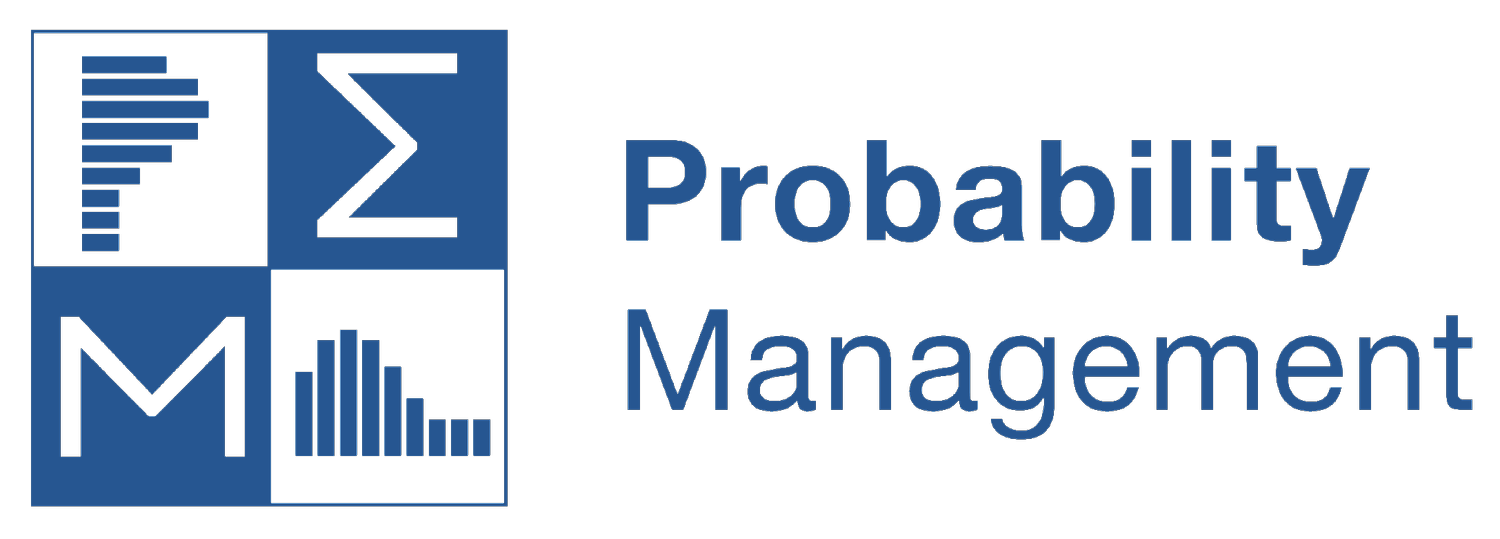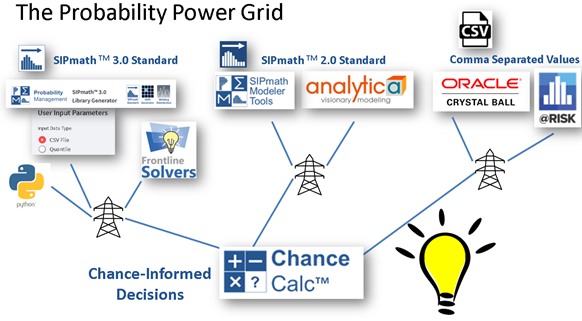by Sam L. Savage
“The man who knows HOW will always have a job.
The man who also knows WHY will always be his boss.
”
I have now delivered my first few Welcome to the Chance Age webinars, and they have inspired a new initiative, the SIPply Chain Forum. I will lead a series of monthly web gatherings in which I and my fellow combatants in the War on Averages will share their experiences in developing SIP libraries. This will start out as an invitation-only event, open to attendees of the webinar series, who are invited at no expense to join me for the latest developments and present their own work. Attendees from the first sessions are grappling with uncertainties ranging from public housing revenues to the sales of building supplies to the impact of cyber-attack.
As a reminder, SIPs are standardized data structures for conveying uncertainty, developed and promulgated by ProbabilityManagement.org. Once uncertainties such as those described above are translated into SIPs using the SIPmath™ Standard format, any Excel user with the ChanceCalc add-in can easily use them to illuminate the chances of meeting specified goals. But where do SIPs come from? Ideally from statistical experts and data scientists, for use by decision makers without such skills. This is analogous to electrical engineers producing the power to illuminate the lightbulbs of non-engineers.
But if probability were electricity, it would be 1895, the date of Westinghouse’s first hydro powerplant at Niagara Falls, so we should all consider ourselves pioneers. The reason WHY we fight averages is because they result in dumb outcomes known collectively as the Flaw of Averages. However, many of you don’t know HOW to create SIP Libraries. But this is what Statisticians and data scientists do know HOW to do, so according to Emerson, they will eventually be working for us.
In the meantime, in the SIPply Chain Forum, we will collaboratively build small prototype libraries and study a growing body of examples, ranging from the Covid Hospitalization Library generator developed by Eng-wee Yeo of Kaiser Permanente to the portfolios of petroleum exploration projects at Shell that kicked off the discipline of probability management.
At this point ChanceCalc can read three different file formats, which may be produced by a wide range of software packages. I have summarized these in the table below. I look forward to seeing you at one of our SIPply Chain Forums where we will all be learning how to move into the Chance Age together.



